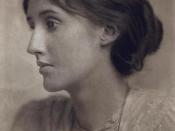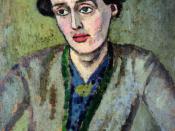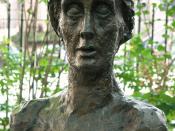Virginia Woolf's writing symbolizes a break away from the conventional writings and styles of the Victorian era, to a new radical modern approach to literature. Woolf believed that language was a weapon of expression, and that "each word, syllable, punctuation mark must justify itself" in every sentence of every line. The stream of consciousness style she adopts in 'To the Lighthouse' allows Woolf to explore the nature of individual perception in relationship to collective understanding. In effect, by giving her characters the chance to express themselves freely, paying extreme attention to detail of everything they feel, observe and do, Woolf finds an equivalent for life. Her belief that prose has the "power to say new things, make new shapes, express new passions" leads her to experiment with the "plasticity of language, the suppleness of the sentence, the poetic possibilities of prose" throughout 'The Window'. In essence, Virginia Woolf creates form through her experimentation with language, and through her close attention to detail, finds an equivalent to life in her novel 'To the Lighthouse'.
Woolf employs a stream of consciousness style to her writing to find an equivalent for life in 'The Window'. Despite the structural divisions, Woolf's narrative voice remains fluent throughout. It is seemingly a third person narration, yet the voice moves freely from the consciousness of one character to that of another. In essence, Virginia Woolf attempts to take the technique of stream of consciousness to a more ambitious dimension. Woolf's development of the stream of consciousness technique in this novel is regarded by most critics as a tour de force. It was crucial to her purpose that the thought process of several characters should be shown. The individual character and their opinions, what they feel, see and say is integral in Woolf's attempts to...


